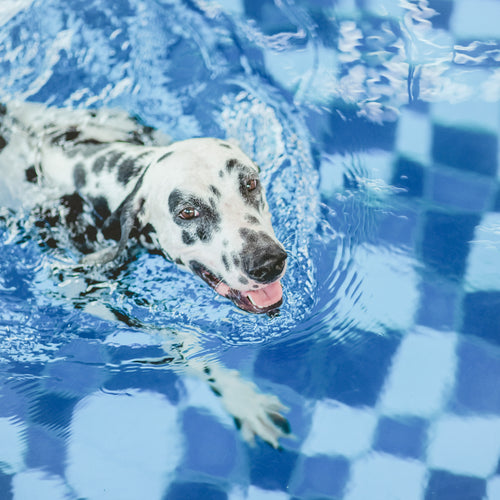Dog Gate
5 Reasons Pet Gates Help Your Dog During the Holidays
October 23, 2025

Active Dog
April 09, 2024
Summer is coming up and we will all be ready to cool off in the water, our pets included. There are many dog-friendly areas that are safe to teach your dog how to swim. We will go over how to give CPR in case of an emergency, and some other dog swimming safety tips for fun swim days!

Hot tubs can lead to a heatstroke, because dogs do not thermoregulate their bodies as we do. There may be a bunch of fur in your filter, but dogs are allowed to swim in chlorinated pools. As long as they don’t drink a lot of the water, it is safe for them in a regular pool.
You never know what your dog will pick up in their swimming adventures and their ears can be easily infected by dirty water. Be sure to bathe them with soap and water, and dry out their ears. If they swam in running, clean water (river), it might just call for a rinse if they don’t smell too bad! Pay attention to their skin and coat to make sure it doesn’t dry out and consider using a hydrating shampoo.
We do not want our dogs drinking from ponds, lakes, or the ocean. There are several different water borne diseases they can get such as Giardia and Leptospirosis, not to mention some stagnant bodies of water can contain blue algae(cyanobacteria). This neurotoxin is fatal and is not always easy to spot. Always bring a bowl of fresh, cold water for them to drink so they will not be tempted.
While many water-oriented dogs were born to swim, some may need a little help. Water dogs should still wear a life vest if they will be swimming a far distance, because they can tire out easily or get limber tail and start to sink. Try a life jacket if your dog has never been in water and go from there. This can give them the confidence they need when they are out swimming in the future. Remember to always use positive reinforcement when training your dog how to swim and never force them to go into the water or you might have some issues during bath time next time around.
If your dog falls into the water and is rendered unconscious, look for any rise in the chest area and listen for air flowing out the nose. Try to wake the dog, but don’t bother looking for a pulse because this will take too much time. If you do not hear or see anything, proceed with CPR. Call a veterinarian while doing CPR and try to make your way to the vet.

Swimming can be a lot of fun, but always know how to do canine CPR before an adventure. It is also great exercise and enrichment for our dogs to be in water. Some would even call it therapeutic. So, don’t be afraid to take your dog to the beach next time. Just be sure that you remember these dog swimming safety tips and read the signs to make sure your dog is welcome!